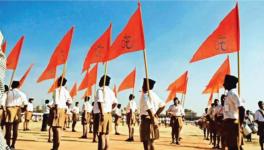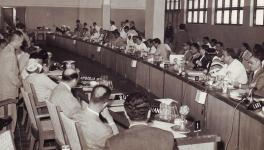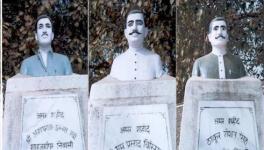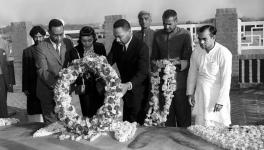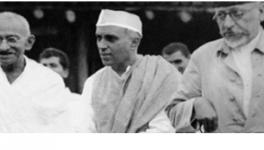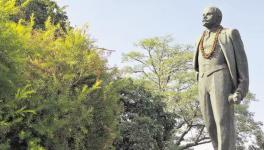Revolutionaries and the Congress
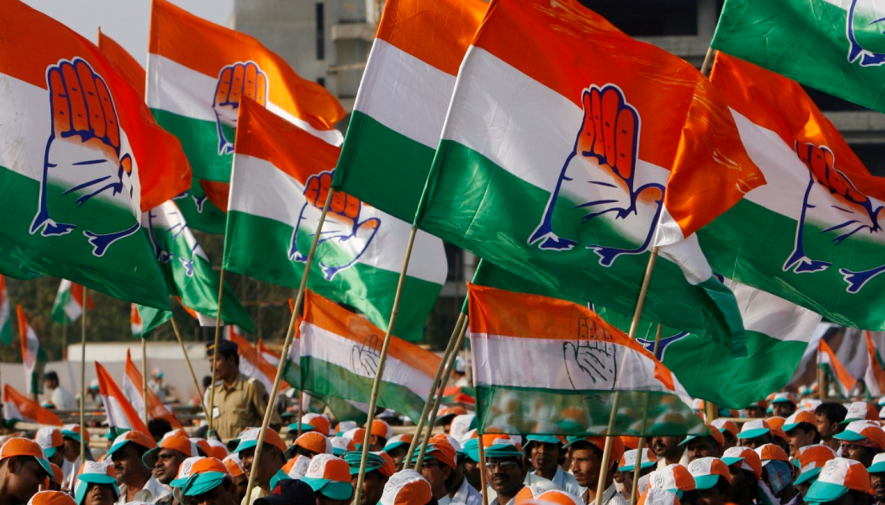
Representational Image. File Image
Since 2014, the Indian National Congress has been a broken house. The newest recruit of the Congress, Kanhaiya Kumar, who once said the party is a “sinking ship” that needs to be ‘saved’ at all costs, confirmed this. Kanhaiya’s joining the Congress has kindled debates in India about the viability of communists in the party. Ostensibly irked, former cabinet minister Manish Tiwari pointed out an obscure book, Communists in the Congress, by Mohan Kumaramanglam, a much earlier communist recruit to the Congress. Other commentators wrote of the leftward shift of the grand old party and argued that it is the natural habitat of the revolutionaries.
They pointed to the pre-independence Congress Socialist Party (CSP) operating within the Congress as a formidable left pole and the close cooperation of communists with leaders such as Subhash Chandra Bose and Jawaharlal Nehru.
True as their claims are, they often blur the lines between the strategic and the tactical. Strategically, the revolutionaries and communists had imbibed a much more radical line that distinguished them from the Congress. Whilst the Congress took around five decades to adopt ‘total independence’ or poorna swaraj as its principal political program, the communists and the revolutionaries had it since their inception. Tactically speaking, the latter often came together with the Congress party on a joint anti-colonial program. After the Dutt-Bradley thesis (1936), the Communist Party of India adopted the line of an ‘Anti-Imperialist Peoples Front’ with the Congress against British imperialism. It was not a blanket endorsement of the entire Congress but clearly distinguished between the ‘right’ and ‘left’ factions within it, which came to the fore when the CSP was born in 1934. The document argued for close cooperation with the latter and outright opposition to the former. International developments such as the rise of European fascism, the threat it posed to the world socialist movement, and the anti-colonial movement also had an essential role in drafting the Dutt-Bradley Thesis.
Another significant phenomenon that the apologists of the Congress, old and new, tend not to emphasise is the question of ‘internal and external prime movers’ within it during the colonial period. The Congress started as a humdrum affair of elite liberals. Its best and lasting contribution was the economic critique of British colonial rule. At the same time, its most radical demands remained the Indianisation of the civil services as the Congress believed that the ‘home charges’, which primarily included the repatriation of salaries and monetary benefits by British civil servants, was the biggest parasite hanging on to the Indian economy.
Then, MK Gandhi arrived at the fortuitous conjuncture of Tilak’s death and the First World War. He led the mass movement in the form of the Non-Cooperation Movement, but at the same time, he abandoned it. Concomitantly, the revolutionaries were ruthless in their criticism of Gandhi. Sohan Singh Josh, a contemporary of Bhagat Singh and later a lifelong member of the Communist Party of India, records in his book, My Meetings with Bhagat Singh and other Early Revolutionaries, that when Bhagat Singh and Sukhdev visited his house in Lahore after killing Saunders, they enquired about the reactions in the Congress. Josh admitted that the ‘youth are happy’, but ‘Gandhians are not’. Bhagat Singh retorted, ‘we knew it beforehand…Gandhi stabbed the nation in the back by withdrawing the non-cooperation movement. The people are still under the cloud of frustration and demoralisation’.
Be that as it may, the revolutionaries and the communists stayed at arm’s length from the Congress. It was this that made their external impact crucial and possible. After the non-cooperation movement, there was a burst of trade unionism and socialistic politics in the mid-1920s. For the first time, socialism began to develop as a political factor in India, and its ideas began to penetrate the minds of the youth. The Kanpur Conspiracy trial (1924) against the communists showed the sharp lookout of imperialism to stamp out the first signs of revolutionary working-class politics. The growth of the Worker’s and Peasants Party (WPP), an alternate front of the communists, proceeded in tandem with the labour movement. The colossal strike movement of 1928 led to a loss of 31,647,000 working days, more than during the previous five years put together. The labour movement put immense pressure on the Congress party from outside.
Before the crucial Calcutta session of the Congress (1928), where it appeared as a house sharply divided between those who wanted complete independence and those content with dominion status (led by Gandhi), 50,000 red-flag waving mill hands marched to the pavilion where the session was about to start. They occupied the place for two hours and demanded that the Congress party accept complete independence as the goal. (Nehru, who presided on 27 December at the Socialist Youth Congress at which communism was declared ‘the only way out’ addressed them.)
Enervated and alarmed, British imperialism put almost all the prominent working-class leaders behind bars. It came to be known as the Meerut Conspiracy Case, which dragged on for a record four years. It completely decapacitated the working-class movement in India, but the impact of all of this was far-reaching. On the eve of the upcoming session of the Congress in Lahore (1929), wherein Gandhi was elected president, he skilfully stepped down and nominated young Nehru to the position. Until the Madras Congress session (1927), Gandhi had opposed a resolution for complete independence and had even called it as ‘hastily conceived and thoughtlessly passed’.
When the Congress session opened in Lahore, Nehru proudly declared himself a ‘socialist and a republican’. Speaking of socialism, he asserted that ‘India will have to go that way, too, if she seeks to end her poverty and inequality’. The Nehru Report compiled by his father Motilal Nehru, had dominion status as its stated goal. It was declared to have lapsed, and poorna swaraj was adopted.
Another significant development that has received scant attention from the historians, even of the left, was that at midnight before the year turned 1930, the flag of Indian independence was unfurled. The first flag was red, white, and green, the red symbolising the stamp of socialism. Later that red was substituted by saffron. As the nation celebrated Independence Day on 26 January 1930, demonstrators in Bombay [now Mumbai] made an effort to hoist the red flag alongside the tricolour. The left congressmen rejoiced at this whilst the right was horrified. Nehru clarified that there is and should be no rivalry between the tricolour flag and the workers’ red flag. He said he honours and respects the red flag because it represents the blood and sufferings of the workers.
Another primary external prime mover which moved the Congress in progressive directions was the revolutionary movement led by Bhagat Singh and his comrades. The Naujawan Bharat Sabha (NBS), of which Bhagat Singh was a leading light, led the Civil Disobedience Movement in Punjab, a province where the Congress had minimal traction. Although the NBS assisted the Congress in its recruiting campaign, the young leaders of the Sabha warned the Congress leaders to ‘stand clear of the way of young men’. Another central distinction between the NBS revolutionaries and the Congress was the concessions to the Indian bourgeoisie.
Whilst Gandhi’s civil disobedience program had accommodated the demands of the Indian business class, such as devaluing the rupee to aid Indian exporters and reserve coastal traffic to Indian shipping, the NBS urged the youth to go to the villages and explain the ‘new revolution’. Villagers then understood that the new revolution would not merely mean a change of rulers, but a revolution ‘of the people and by the people’. In apparent defiance of the bourgeois demands, the manifesto issued by the Sabha in 1929 stated that ‘swaraj was for 98 percent of the people’.
Bhagat Singh’s Hindustan Socialist Republican Association (HSRA) had adopted abolition of landlordism, liquidation of peasant indebtedness, nationalisation of land and industries, housing, social security, and universal education. The full force of these ideas was felt after Bhagat Singh and his comrades were hanged. The Congress, especially Gandhi, were blamed for their inability to save Bhagat Singh, Sukhdev and Rajguru. The seething among the youth was displayed when Gandhi and Vallabhbhai Patel were shown black flags when they arrived in Karachi for the Congress session.
Historians have gravely erred in arguing that the Karachi Congress resolution, which included progressive demands such as nationalisation of critical industries, labour welfare, trade union rights etc., was Gandhi’s concession to the left within the Congress, primarily Nehru. In reality, it was Bhagat Singh’s ghost that loomed large at the session. The hanging was on 23 March 1931, and the session lasted from 26 to 31 March. The Congress had no option but to accommodate Bhagat Singh’s program, or there would not have been a fig leaf to hide their disgrace at failing to save Bhagat Singh and his comrades from the gallows.
To sum up, the revolutionaries, communists, and socialists pushed the Congress party in radical and progressive directions. The Congress hardly exerted the pressure the other way round as it lacked potential prime movers within.
Shubham Sharma and Ajay Saharan are research scholars with the department of world history, University of Cambridge and department of economics, Indira Gandhi Institute of Developmental Research, respectively. The views are personal.
Get the latest reports & analysis with people's perspective on Protests, movements & deep analytical videos, discussions of the current affairs in your Telegram app. Subscribe to NewsClick's Telegram channel & get Real-Time updates on stories, as they get published on our website.










